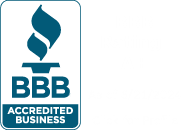What are Bylaws?
Bylaws are the governing document that establishes how a nonprofit organization operates. The IRS has specific requirements that must be included in the Bylaws for a 501c3 tax-exempt nonprofit. The Bylaws serve as Internal operating rules for an organization; they state who should do what, how they should do it, when they should do it, etc.
What are Bylaws for a Nonprofit Organization?
Many first-time nonprofit entrepreneurs ask questions about what nonprofit bylaws are. Think of your bylaws as the “constitution” of your organization. Once you’ve assembled your nonprofit board members, you’ll establish the organization’s bylaws that will guide the board and nonprofit staff on how your nonprofit will operate. It’s essential to understand the state and local laws about nonprofits before creating bylaws for a 501c organization, as you need to comply with all municipal regulations.
What is the Purpose of Bylaws for Nonprofits?
Now that you have a better understanding of what nonprofit bylaws are let’s explore the purpose of having this document. Nonprofit bylaws should guide your board’s actions and decision-making process. This document will help prevent disagreements by outlining rules around authority levels, board member and employee rights, and performance expectations.
Nonprofit bylaws are an essential legal document that should not be taken lightly. Members of the board can be held liable for breach of duty if they fail to follow them.
Top 5 501c Bylaws Best Practices
What are bylaws for a nonprofit? In short, they’re a legal document that needs to be carefully constructed and followed, so that board members understand their roles and responsibilities. Here are five of our best practices for creating and approving your nonprofit’s bylaws.
1. Get help.
501c bylaws are legal documents, and their requirements vary from one state to the next. When drafting this document, consult with a qualified nonprofit professional who has experience with charitable organizations. Remember, not all legal professionals have nonprofit experience, so if they don’t know what nonprofit bylaws are or how to write them, you might want to look elsewhere!
2. Make your bylaws public
While nonprofit bylaws can be internal documents, making them available on your organization’s website increases your transparency (and that’s always important when it comes to fundraising and securing grants).
3. Stick to the fundamentals
Bylaws should only address the governance structure of the nonprofit. Information that changes, such as marketing campaigns or job descriptions, should not be included.
4. Personalize.
While it might be tempting to download templated bylaws from a legal documents website, resist the urge! Good nonprofit bylaws will align with your organization’s mission and culture and should be personalized to be effective.
5. Schedule regular review.
Bylaws need to reflect your organization accurately, so reviewing and updating bylaws every two years is ideal.
Checklist: How to Make Bylaws for Nonprofits
While 501c bylaws need to be personalized to your organization, this general checklist will help you develop each required section.
I. Name and purpose
This section can appear as written in the organization’s Articles of Incorporation.
II. Election, roles, and terms of board members and officers
Describe the board’s qualifications, term limits, and duties, including election, termination, and resignation and procedures.
III. Membership
If your organization has members, provide details about eligibility, dues, rights, and your termination process. In addition, provide information about your annual meeting, special meetings, and meeting notices.
IV. Quorum guidelines and board structure
Many states specify the minimum and maximum number of board members and the number of present board members required for a quorum, so check your state’s regulations.
VI. Compensation and indemnification
Compensation for directors, officers, and employees should be outlined. In addition, in some states, nonprofits must indemnify or protect the board and directors from loss or harm resulting from risk. Check your state’s regulations to ensure compliance in this area.
VII. Role of the executive director
While the board is responsible for hiring an executive director, the nonprofit bylaws should contain language about the board’s termination authority, including the number of votes needed to approve the removal of the executive director.
IX. Amendment of bylaws
Organizations change over time, so make sure your nonprofit’s bylaws can be amended. Amendments can happen by a majority vote at a routine board meeting.
X. Dissolving the organization
Most nonprofit bylaws need to have a dissolution clause unless specified by state law. If required, you must specify how your organization’s assets will be distributed for tax-exempt purposes should you relinquish tax-exempt status and dissolve.
Brytebridge Nonprofit Solutions
7021 University Blvd. Winter Park, FL 32792
1-877-857-9002
Monday – Friday EST 9 AM – 7 PM
https://brytebridge.com/


